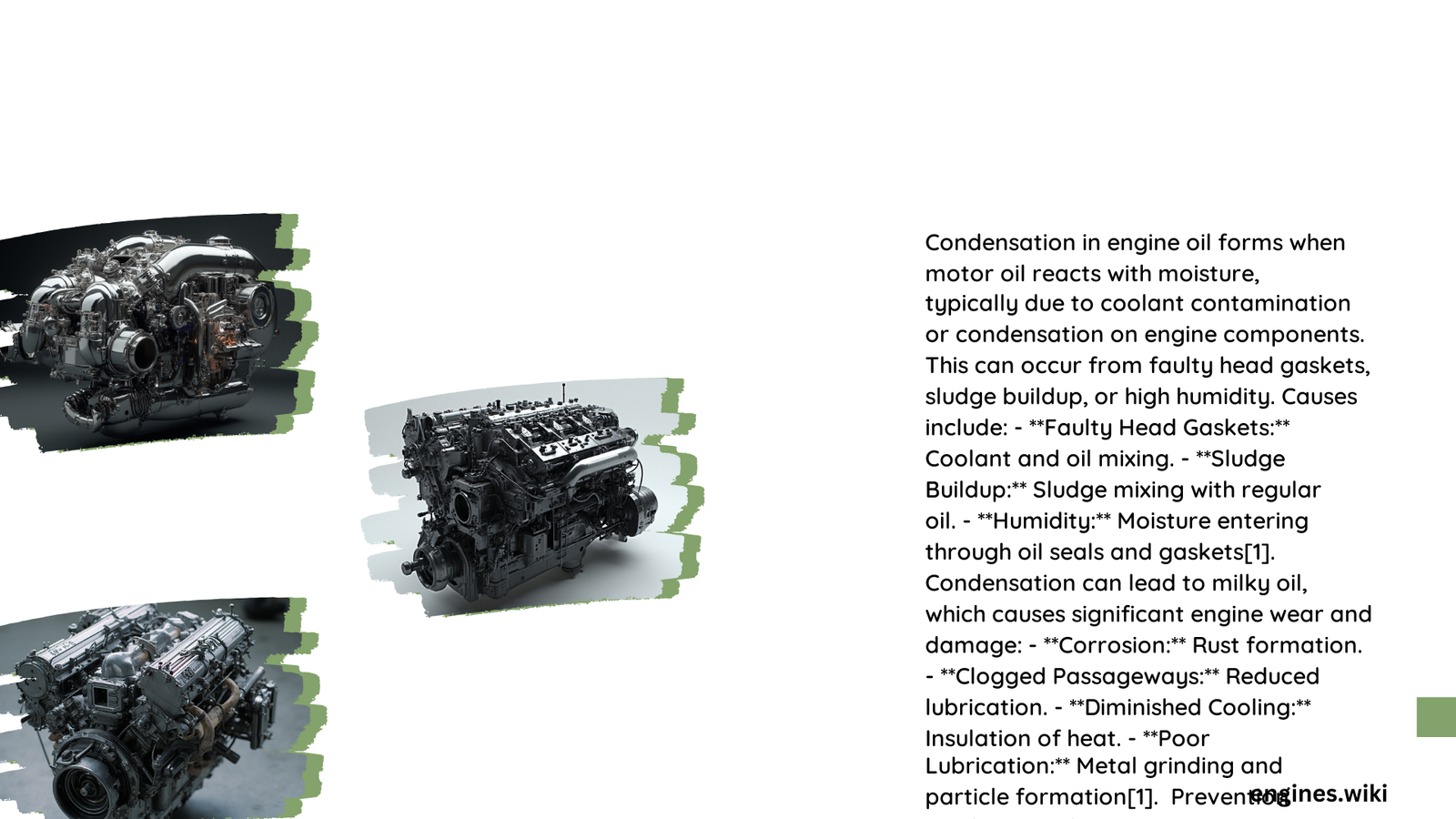Condensation in engine oil is a common issue that occurs when moisture accumulates in the engine’s lubricating system. This phenomenon can lead to various problems, including reduced engine performance, increased wear on components, and potential long-term damage. Understanding the causes, effects, and solutions to condensation in engine oil is crucial for maintaining your vehicle’s health and longevity.
What Causes Condensation in Engine Oil?
Condensation in engine oil primarily occurs due to temperature fluctuations, short trips, and high humidity levels. When the engine cools down, especially in cold weather, the air inside can reach its dew point, causing moisture to condense. Short trips prevent the engine from reaching optimal operating temperature, leading to moisture accumulation. High humidity in the air can also cause the engine oil to absorb water vapor, particularly if the oil is hygroscopic.
How Do Temperature Changes Affect Oil Condensation?
Temperature fluctuations play a significant role in the formation of condensation in engine oil. Here’s how:
- Cold Weather Impact: In winter months, the drastic temperature difference between the warm engine and cold ambient air creates an ideal environment for condensation.
- Daily Temperature Swings: Areas with significant daily temperature fluctuations are more prone to oil condensation issues.
- Engine Cooling Process: As the engine cools down after operation, the air inside contracts, potentially drawing in moist air from the environment.
Why Do Short Trips Increase Condensation Risk?
Short trips are particularly problematic for engine oil condensation:
- Insufficient Warm-Up: The engine doesn’t reach its optimal operating temperature, preventing moisture evaporation.
- Accumulation Over Time: Repeated short trips can lead to a gradual build-up of moisture in the oil.
- Incomplete Combustion: Short trips may result in incomplete fuel combustion, potentially introducing additional moisture into the system.
What Are the Symptoms of Condensation in Engine Oil?

Recognizing the signs of condensation in engine oil is crucial for timely intervention. Here are the key symptoms to watch out for:
- Milky Oil Appearance: The most visible sign is a milky or cloudy appearance of the oil, especially around the oil filler cap.
- Reduced Lubrication Efficiency: Water in the oil can increase viscosity and reduce its ability to lubricate engine components effectively.
- Potential Engine Wear: Increased friction and corrosion due to water contamination can lead to accelerated wear on engine parts.
How Does Milky Oil Indicate Condensation?
The milky appearance of engine oil is a telltale sign of water contamination:
- Emulsification: Water mixes with oil to form an emulsion, giving it a milky or cloudy appearance.
- Location: This is often most noticeable around the oil filler cap or on the dipstick.
- Persistence: Unlike normal condensation that might clear up quickly, persistent milkiness indicates a more serious issue.
What Are the Effects on Engine Performance and Longevity?
Condensation in engine oil can have several detrimental effects on your engine:
- Viscosity Changes: Emulsified water increases oil viscosity, potentially affecting engine efficiency and fuel consumption.
- Accelerated Oxidation: Water in oil speeds up oxidation, leading to oil degradation and potential sludge formation.
- Increased Wear: Water contamination can cause corrosion and increased friction on engine components.
- Potential Repair Costs: Neglecting condensation issues can lead to significant engine damage and expensive repairs.
How Does Condensation Impact Oil Viscosity?
Condensation can significantly alter oil viscosity:
| Condition | Effect on Viscosity | Impact on Engine |
|---|---|---|
| Normal Oil | Optimal flow | Efficient lubrication |
| Slight Condensation | Increased viscosity | Reduced efficiency |
| Severe Condensation | Highly viscous | Potential engine damage |
What Are Effective Mitigation Techniques?
To address and prevent condensation in engine oil, consider the following strategies:
- Regular Oil Changes: Frequent oil changes help remove accumulated moisture and prevent damage.
- Use Appropriate Oil: Choose engine oils with polar additives that can trap water, making it easier to identify and remove during oil changes.
- Modify Driving Habits: Take longer drives to allow the engine to reach its optimal operating temperature and evaporate condensed moisture.
How Often Should Oil Be Changed to Prevent Condensation?
The frequency of oil changes depends on several factors:
- Climate: More frequent changes in humid or cold climates
- Driving Habits: Increase frequency for predominantly short trips
- Vehicle Age: Older vehicles may require more frequent changes
- Oil Type: Synthetic oils generally allow for longer intervals
As a general rule, consider changing oil every 3,000 to 5,000 miles in prone conditions, or follow your vehicle manufacturer’s recommendations.
What Types of Oil Are Best for Humid Conditions?
Choosing the right oil can help mitigate condensation issues:
- Synthetic Oils: Generally more resistant to water absorption
- Oils with Polar Additives: Help form emulsions that trap water
- Low Hygroscopic Oils: Minimize water absorption from the air
Consult your vehicle’s manual and a professional mechanic to determine the best oil for your specific situation and climate conditions.
By understanding the causes, recognizing the symptoms, and implementing effective mitigation strategies, you can protect your engine from the harmful effects of condensation in engine oil. Regular maintenance and appropriate driving habits are key to ensuring your vehicle’s longevity and performance.
References:
1. YouTube: Moisture in engine oil, no need to panic
2. Machinery Lubrication: The Four States of Water in Oil
3. Car Talk Community: Oil is milky just around the fill cap
4. Example Automotive Blog: Understanding Engine Oil Condensation
